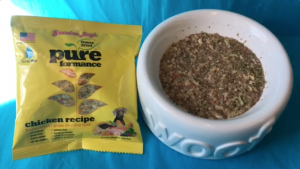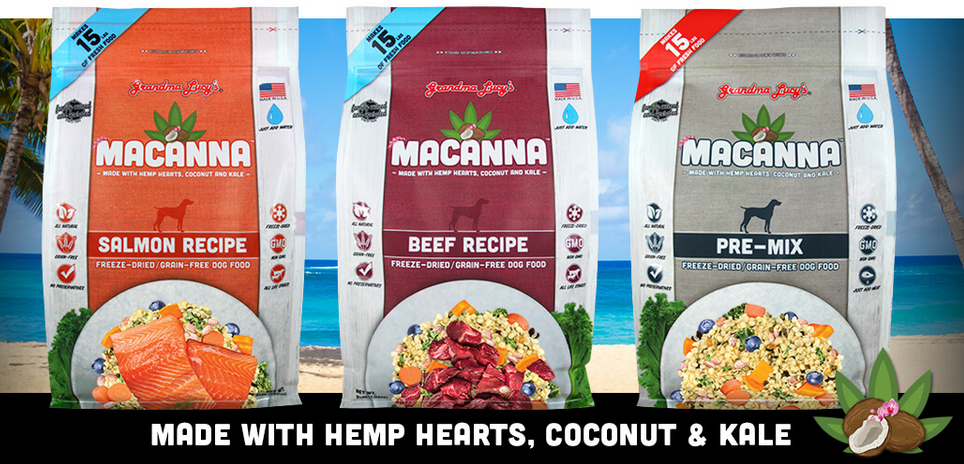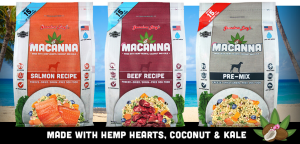Making Freeze-dried Pet Food Accessible
Grandma Lucy’s makes accessibly-priced freeze-dried pet food. It costs about the same per day (about $3.50-$4.25 for an average 50lb dog) as our most popular kibble, Acana. So should you consider switching or adding it to your food rotation? Comparing kibble and freeze-dried foods is like comparing apples to oranges. But we can talk about the advantages and disadvantages of each in terms of how closely they mirror a carnivore’s natural diet. Acana is made by the superhero of dry pet foods, Champion Pet Foods, and we highly recommend it. On the upside, Acana is a high-protein ‘species-appropriate, whole prey’ food with the best quality ingredients, freshly sourced, gently processed. It does contain carbohydrates, which neither cats nor dogs have a need for nutritionally, but these are complex carbs (typically lentils and beans) rather than simple carbs (like corn or potatoes). That translates to moderate changes in blood sugar levels rather than spikes, meaning less risk of obesity and diabetes than with simple carbs. Acana is a dry food, meaning it’s gone through an extrusion process, which exposes the ingredients to high pressure and typically very high heat. Champion has developed their own lower-temperature extrusion process, another thumbs-up for Champion…but the result is still a cooked, condensed, dry food.
 What is freeze-dried & why is it preferable?
What is freeze-dried & why is it preferable?
Freeze-dried food is essentially whole & raw, with its moisture removed. The freeze-drying process means that food is flash-frozen and put into a freeze-dryer. Grandma Lucy’s freeze-dryer reaches temperatures as low as -85 degrees. The moisture evaporates directly from a solid to a gas, bypassing the liquid stage, and in so doing apparently retains its enzyme potency and cellular integrity. Enzymes are needed for chemical reactions that occur during digestion, especially in breaking down starches, and they’re necessary for absorption and conversion to energy. They’re heat sensitive and are usually killed in processing that involves heat…but freeze-drying doesn’t use heat, which means the body can make use of all those great ingredients rather than just passing them.
Moisture is also an important part of a healthy diet. Freeze-dried treats are fine without water, but when feeding freeze-dried as a meal, you absolutely need to add a little warm water (or broth, or other alternative like goat’s milk) or you can cause dehydration, constipation and/or GI distress. Freeze-dried foods are ‘moisture sensitive’, meaning they reconstitutes easily with little-to-no waiting time. Just add the recommended amount of liquid, stir, and you are pretty much all done.
Another advantage to freeze-dried pet food is that it’s very light (about 70-90% lighter due to the moisture-removal process). And, it’s shelf-stable for as long as 18 months. That means it’s great for small storage spaces, traveling, carrying it home on the train….and it won’t go bad on you fast.
Finally, palatability in freeze-dried pet food is very high. Small dogs and cats have a track record in our stores of turning their noses up to our best recommendations…but rarely so with freeze-dried. I can only guess that the flavor is concentrated when moisture removed…though when adding it back in the form of warm water, it should reverse the effect. It doesn’t seem to change their response: 4 paws up, way up, for freeze-dried.
Grandma Lucy’s has several freeze-dried pet food formulas, and they all have protein as their main source of calories. Both the Artisan and Pureformance lines are designed for food-sensitive dogs, with novel proteins like pork, bison, lamb or venison (Artisan); and rabbit, lamb, fish or, uniquely, goat (Pureformance). There’s also Pureformance Pre-Mix, a base you can add your own meat to for a fully balanced diet. These are all great options for any pet owner looking for hypo-allergenic protein sources. The protein is the main ingredient but there are fruits and vegetables and starchy carbs here too: chick peas (Pureformance), potato (Artisan), quinoa (Valor), and pinto beans (Macanna).
As there is no ‘best food’ for all pets, it comes down to the specific needs of your animals. When making recommendations in our stores, we consider age, weight, breed, activity level, food sensitivities, overall health and species of course. And in evaluating foods, the level of processing and the quality of ingredients are primary considerations. Because freeze-drying leaves more of the original, whole nutrient value intact, we recommend freeze-dried foods over kibble. It’s closer to our animals’ natural diet, and it’s more bio-available.


